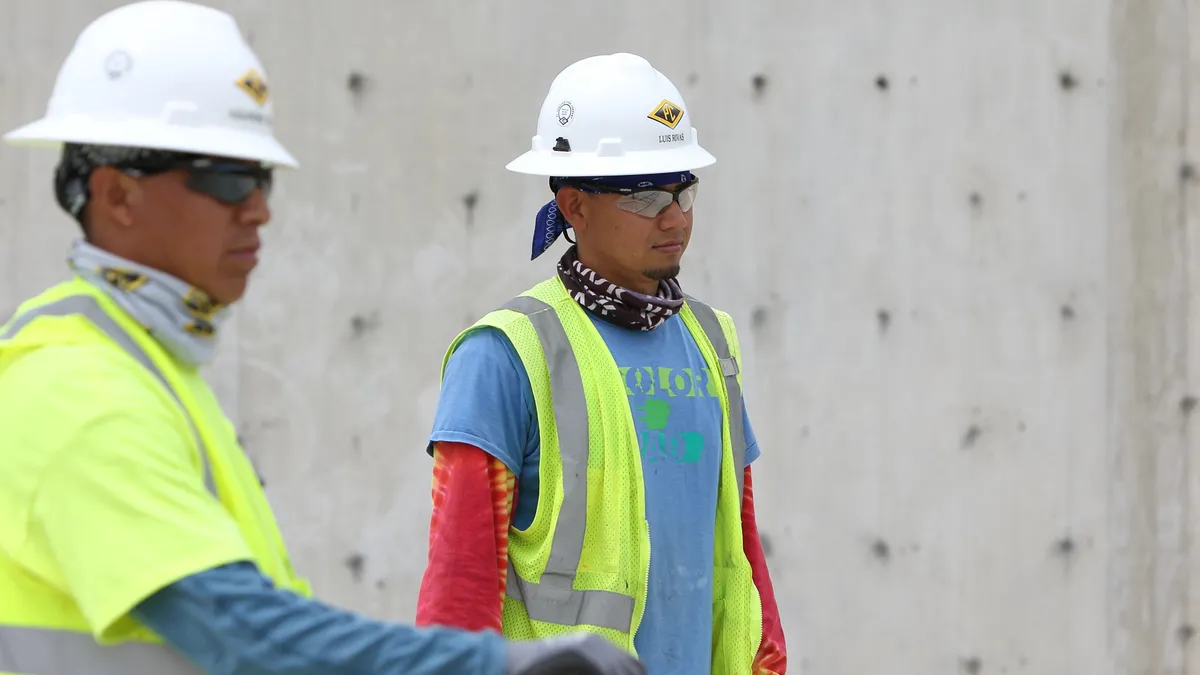Panelist Simeon Terry put it succinctly.
"You have to get comfortable being uncomfortable," said Terry, the vice president of diversity affairs for Dallas-based contractor Austin Commercial, during a panel titled The Why Behind Diversity & Inclusion at the 2021 Construction Financial Management Association's annual conference
The goal of the panel was to provide advice and best practices to construction professionals who are in the process of making their workplaces more diverse, while supporting the diverse employees they already work with.
The panel followed a series of racist incidents on construction sites around the nation following George Floyd's murder in 2020, including nooses found on an Amazon jobsite in April. Between 2015 and 2020, the Equal Employment Opportunity Commission has received at least 50 complaints involving nooses on construction sites, according to the Washington Post.
According to the Bureau of Labor Statistics 2020 data, 10.9% of construction industry members are women. Regarding race, 6% are Black, and 2% are Asian. Thirty percent are Latino, a demographic category of ethnicity, not race.
Manageable change
Two of the biggest points brought up by the panel overlapped with each other—make small, manageable changes that you can commit to instead of big, sweeping ones, and not being silent on issues of injustice in the workplace.
Leading by example, the panel set its own "rules of engagement," including to "assume positive intent" and "embrace the power of humble listening" for its discussion.
Terry spoke about what it meant to be intentional when recruiting and working with diverse groups of people within the construction industry.
For example, Terry, who is Black, said it meant a lot to him to get calls from other senior leadership and even some board members at his company after Floyd's murder and the resulting social protests last summer. As a 21-year veteran of his company, he said it took things "to a whole other level" when he got that support.
"That meant something. That meant a great deal. For someone just to notice and care and say 'Hey, you know what, I don’t experience this directly in my life, but I have people that work for me that do,'" Terry said.
Fellow panel member Willy Pegues, vice president of diversity, equity and inclusion at Kansas City, Missouri-based McCownGordon Construction, noted that workers often interpret silence in the workplace from leadership as a tacit approval of the behavior occurring.
"If you don't say anything, it's kind of like you're being compliant, because you're not standing up and doing the right thing," said Pegues.
Panelist Brittany Diederich, director of finance and administration at West Fargo, North Dakota-based Industrial Builders Inc., has dealt with silence from above firsthand. Diederich, who identifies as a gay woman, wrote a column in the CFMA's Building Profits publication about her experiences in the construction industry, and coming out to her colleagues and family members.
She spoke during the panel about how it felt to her when people see social issues, such as being LGBTQIA+, through a political lens.
"It's not political to be a human being," Diederich said.
But what can companies do with those small, incremental changes? The panelists emphasized changing what you can, depending on the culture.
"Pay attention to your managers. Pay attention to how they act and what they say. Most of your company culture is set by your managers and your leaders. Hold them accountable for the behaviors you want to build, because they are building your culture every single day, whether you like it or not," said Rachel Hudson, an HR programs manager for BKD, a national public accounting firm.
Hudson also encouraged creating a feeling of trust and safety within an organization. By doing this, Hudson said, employees can feel comfortable sharing their ideas and perspectives, while also being able to speak out when something isn't working, or when something concerns them.
Hudson said managers should look at trouble areas, areas where they're losing talent, and see what they can address and fix with focuses on diversity and inclusion. Along with that, she advised opening up the conversation about the goals of rebuilding company culture to attract new talent. Once you have that conversation, Hudson said, align your leaders to the language you want to use.
"You don't have to boil the ocean overnight. Start somewhere, start that conversation, and use those rules of engagement," Hudson said.




















